Vidofludimus inhibits porcine reproductive and respiratory syndrome virus infection by targeting dihydroorotate dehydrogenase
- PMID: 38124181
- PMCID: PMC10731701
- DOI: 10.1186/s13567-023-01251-0
Vidofludimus inhibits porcine reproductive and respiratory syndrome virus infection by targeting dihydroorotate dehydrogenase
Erratum in
-
Correction: Vidofludimus inhibits porcine reproductive and respiratory syndrome virus infection by targeting dihydroorotate dehydrogenase.Vet Res. 2024 Dec 27;55(1):173. doi: 10.1186/s13567-024-01447-y. Vet Res. 2024. PMID: 39731128 Free PMC article. No abstract available.
Abstract
Porcine reproductive and respiratory syndrome virus (PRRSV) infection has caused huge economic losses in global swine industry over the last 37 years. PRRSV commercial vaccines are not effective against all epidemic PRRSV strains. In this study we performed a high-throughput screening (HTS) of an FDA-approved drug library, which contained 2339 compounds, and found vidofludimus (Vi) could significantly inhibits PRRSV replication in Marc-145 cells and primary porcine alveolar macrophages (PAMs). Compounds target prediction, molecular docking analysis, and target protein interference assay showed that Vi interacts with dihydroorotate dehydrogenase (DHODH), a rate-limiting enzyme in the de novo pyrimidine synthesis pathway. Furthermore, PRRSV infection was restored in the presence of excess uridine and cytidine which promote pyrimidine salvage, or excess orotate which is the product of DHODH in the de novo pyrimidine biosynthesis pathway, thus confirming that the antiviral effect of Vi against PRRSV relies on the inhibition of DHODH. In addition, Vi also has antiviral activity against Seneca virus A (SVA), encephalomyocarditis virus (EMCV), porcine epidemic diarrhea virus (PEDV), and pseudorabies virus (PRV) in vitro. These findings should be helpful for developing a novel prophylactic and therapeutic strategy against PRRSV and other swine viral infections.
Keywords: PRRSV infection; Vidofludimus; antiviral; broad-spectrum; dihydroorotate dehydrogenase.
© 2023. The Author(s).
Conflict of interest statement
The authors declare that they have no competing interests.
Figures

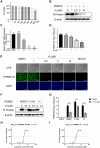

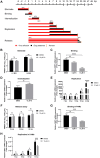

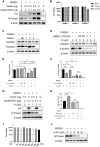
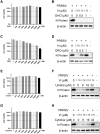

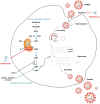
Similar articles
-
Discovery of small molecules against porcine reproductive and respiratory syndrome virus replication by targeting NendoU activity.J Virol. 2025 Feb 25;99(2):e0203424. doi: 10.1128/jvi.02034-24. Epub 2024 Dec 31. J Virol. 2025. PMID: 39745451 Free PMC article.
-
Inhibition of proanthocyanidin A2 on porcine reproductive and respiratory syndrome virus replication in vitro.PLoS One. 2018 Feb 28;13(2):e0193309. doi: 10.1371/journal.pone.0193309. eCollection 2018. PLoS One. 2018. PMID: 29489892 Free PMC article.
-
Restriction of porcine reproductive and respiratory syndrome virus replication by galectin-1.Vet Microbiol. 2019 Aug;235:310-318. doi: 10.1016/j.vetmic.2019.07.024. Epub 2019 Jul 23. Vet Microbiol. 2019. PMID: 31383318
-
Mechanism of PRRSV infection and antiviral role of polyphenols.Virulence. 2024 Dec;15(1):2417707. doi: 10.1080/21505594.2024.2417707. Epub 2024 Oct 21. Virulence. 2024. PMID: 39432383 Free PMC article. Review.
-
DHODH inhibitors: What will it take to get them into the clinic as antivirals?Antiviral Res. 2025 Apr;236:106099. doi: 10.1016/j.antiviral.2025.106099. Epub 2025 Feb 10. Antiviral Res. 2025. PMID: 39938808 Review.
Cited by
-
Inactivated Rothia nasimurium promotes a persistent antiviral immune status in porcine alveolar macrophages.Front Immunol. 2025 Jun 3;16:1584092. doi: 10.3389/fimmu.2025.1584092. eCollection 2025. Front Immunol. 2025. PMID: 40529370 Free PMC article.
-
Correction: Vidofludimus inhibits porcine reproductive and respiratory syndrome virus infection by targeting dihydroorotate dehydrogenase.Vet Res. 2024 Dec 27;55(1):173. doi: 10.1186/s13567-024-01447-y. Vet Res. 2024. PMID: 39731128 Free PMC article. No abstract available.
-
Identification of compounds targeting porcine reproductive and respiratory syndrome virus nsp3 and evaluation of their antiviral efficacy.Virulence. 2025 Dec;16(1):2530176. doi: 10.1080/21505594.2025.2530176. Epub 2025 Jul 6. Virulence. 2025. PMID: 40619342 Free PMC article.
References
-
- Paton DJ, Brown IH, Edwards S, Wensvoort G (1991) “Blue ear” disease of pigs. Vet Rec 128:617 - PubMed
-
- Pejsak Z, Stadejek T, Markowska-Daniel I (1997) Clinical signs and economic losses caused by porcine reproductive and respiratory syndrome virus in a large breeding farm. Vet Microbiol 55:317–322 - PubMed
-
- Lunney JK, Fang Y, Ladinig A, Chen N, Li Y, Rowland B, Renukaradhya GJ (2016) Porcine Reproductive and Respiratory Syndrome Virus (PRRSV): Pathogenesis and Interaction with the Immune System. Annu Rev Anim Biosci 4:129–154 - PubMed
-
- Snijder EJ, Kikkert M, Fang Y (2013) Arterivirus molecular biology and pathogenesis. J Gen Virol 94:2141–2163 - PubMed
-
- Albina E (1997) Epidemiology of porcine reproductive and respiratory syndrome (PRRS): an overview. Vet Microbiol 55:309–316 - PubMed
MeSH terms
Substances
Grants and funding
LinkOut - more resources
Full Text Sources

